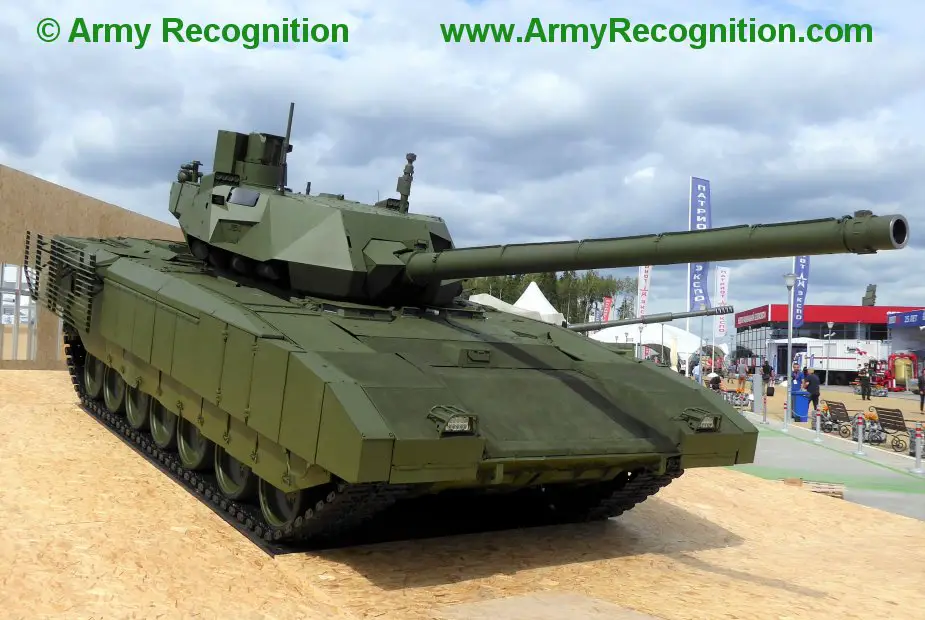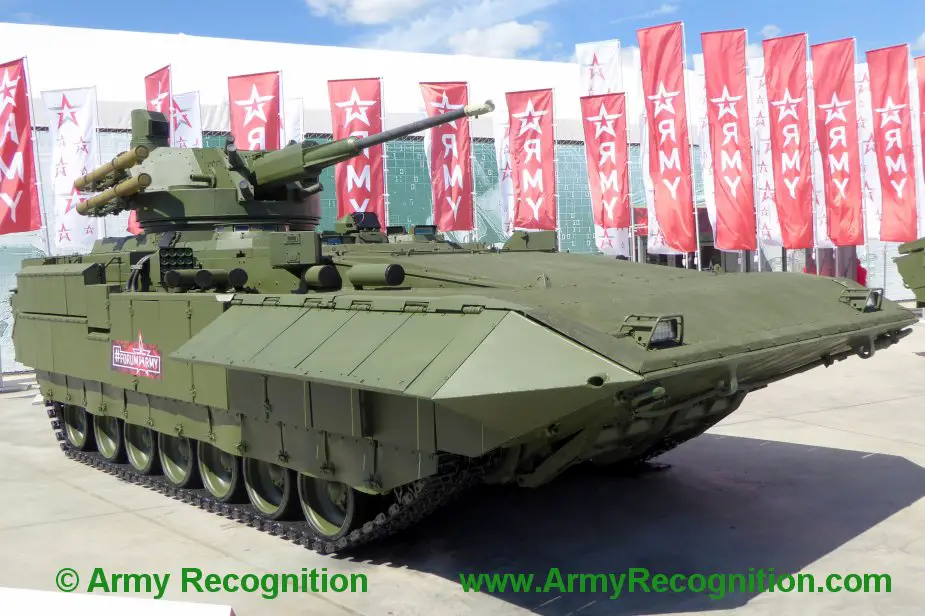Russia is beginning to train operators of vehicles on Armata platform. Two military schools will be engaged. The first cadets will be enrolled in 2021 and will graduate as T-14 tank platoon commanders. Senior cadets will be able to acquaint themselves with the modern vehicles in 2020 already. Experts believe the time is sufficient to avoid major errors that can break down the vehicles, the Izvestia daily writes.
Follow Army Recognition on Google News at this link

T-14 Armata displayed at Army-2018 defense forum (Picture source: Army Recognition)
Sources in the Defense Ministry said it had been decided to enroll cadets into tank schools for training to operate Armata vehicles. The first enrolment is scheduled in 2021, however the time may change. Two schools will train would-be officers. Kazan High Tank School will train tank platoon commanders. Omsk Armor Engineering Institute will train experts in the overhaul and operation of Armata family. The training will take four years and the first graduates will come to operate Armata in the army in 2025-2026.
Cadets will initially study on simulators. They will be soon supplied to the school in Kazan. In particular, it will get T-14 tank simulator TVK-Armata and fire support simulator TOPK-Armata BM-S. The school will then get simulators to train tank commanders and tank platoon commanders.
Omsk school will get sectional tanks, their units and mechanisms and other training means for would-be engineers and overhaul experts. Senior cadets will be able to acquaint themselves with the vehicles in 2020. Classes will be held for students who will get lieutenant chevrons in a year or two. “Officers have to know how to operate the hardware themselves and teach soldiers,” expert Viktor Murakhovsky said. “Senior students have at least a year to do it. They cannot fully master the vehicles in such a brief time, but will be able to avoid errors that can break down the hardware,” he said.
T-14 is the most sophisticated armored vehicle in the Russian army, the expert said. “The tank has a lot of electronics. The weapons are controlled by the so-called technical vision. There is no direct monitoring through optical sights. The vehicle is integrated into the single tactical control. It carries the latest communication and navigation means. Major education is necessary for officers to know how it works and to correctly operate the hardware,” he said.
T-14 tank on Armata platform was for the first time demonstrated at May 9, 2015 Victory parade. It underwent preliminary trials in 2019. Armata differs from all operational tanks. The unmanned turret is the main innovation. The crew stay in an isolated armored capsule and remotely control the weapons. It decreases the risk to life in combat.
Armata is a heavy tracked universal platform to carry various hardware: T-14 tanks, T-15 infantry fighting vehicles, T-16 overhaul and evacuation armored vehicles, etc. T-16 is ready. It evacuates damaged vehicles and overhauls them in field conditions. It has a bulldozer blade and differs from existing BREM-1M vehicle by a more powerful manipulator crane and a power winch.
T-15 is undergoing trials. The vehicle weighs 55 tons and is heavier than most Russian tanks. The size helps combine proper protection, powerful arms and a spacious compartment for the assault force.
The engine is located in the front to offer additional protection for the crew and soldiers. Besides, front armor of the vehicle is the same as modern tanks have. Dynamic armor also protects T-15 and intercepts missiles and projectiles. It all provides unprecedented protection to the prospective infantry fighting vehicle, the Izvestia said.

T-15 Armata displayed at Army-2018 defense forum (Picture source: Army Recognition)
© Copyright 2020 TASS / Army Recognition Group SPRL. All rights reserved. This material may not be published, broadcast, rewritten or redistributed.














